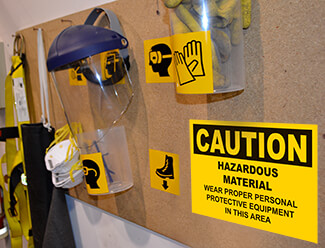Exposure Report Shows Areas for Improvement
03
February,
2023
2 MINUTE READ

Noise, dust, fumes, and chemicals are just a few and common substances with which workers are in contact routinely. Researchers from the Washington State Department of Labor & Industries recently released a report on exposures showing that, between 2008 and 2016, at least a quarter of workplace hazardous substance samples had twice the recommended level or beyond. Workplace exposure limits are in place to help protect workers from the hazards of industrial substances.
Report Findings
Occupational exposure limits set by federal regulations are in place to help keep workers safe from developing physical conditions and ailments including hearing loss and cancer. Also, asthma rates can increase from being either caused or aggravated by workplace exposures.
In the Washington L&I report, 4,394 exposure samples were gathered and the severity level of each substance was calculated and compared with the established exposure limit. The results show respirable silica, noise, dust, chromium, and nitrous oxide were the top substances with levels exceeding what they should be. In noise exposure samples, the construction industry had the highest maximum level. Industries with the highest median severity were real estate and rental, and waste management and remediation services. Abrasive blaster jobs had the highest dust and noise exposure severity.
According to the report, "Statewide managers can use sampling data to investigate ? the type of exposures occurring in industries throughout the state and to develop policies and strategies to prevent exposures to address newly identified, highly toxic, and carcinogenic substances."
Researcher Recommendations
 Some industries that were successful in limiting exposure limits were found to have adopted control methods and work practices known to reduce worker exposures. A tool kit by Occupational Safety & Health Administration walks employers through the steps of transitioning to safer chemicals. To make hazard assessment easier, employers can find a safer chemical, product, or process. The Washington researchers said they also found use of real-time screening tools can assist in the limiting of chemical and other element exposures. Employers can utilize several tips for a multi-approach to exposure safety:
Some industries that were successful in limiting exposure limits were found to have adopted control methods and work practices known to reduce worker exposures. A tool kit by Occupational Safety & Health Administration walks employers through the steps of transitioning to safer chemicals. To make hazard assessment easier, employers can find a safer chemical, product, or process. The Washington researchers said they also found use of real-time screening tools can assist in the limiting of chemical and other element exposures. Employers can utilize several tips for a multi-approach to exposure safety:
- Perform a risk assessment and evaluation to identify and document potential exposure hazards. Actively review and perform exposure assessments on a routine basis.
- Monitor the amount and type of worker exposure. Select personal protective equipment specific for the job and considering the type of exposure. Organize PPE so that workers can easily select what they need and when.
- Provide refresher or update training on new and modified tools, equipment, and safety best-practice techniques.
Paying attention to occupational exposure risks and hazards is part of having a solid safety program. Review workplace exposures to plan and prepare safety accordingly. The benefits of continually improving a safety program is that it can transform workplace culture to help reduce injuries and overall costs. Employers can harness improved workplace safety thorough continual communication and training.
RELATED RESOURCES

Labeling is Crucial in Bulk Chemical Handling
Safety in handling bulk chemical unloading is a procedure that requires careful work and optimal ...
Read
ANSI Issues Dropped Objects Standard
To help eliminate the hazards of dropped objects from heights, the International Safety Equipment Association ...
Read
Books That Shaped Work in America
Books reflect the life and times of people. Narrowing the lenses on people at work provides an intriguing ...
Read.png)


